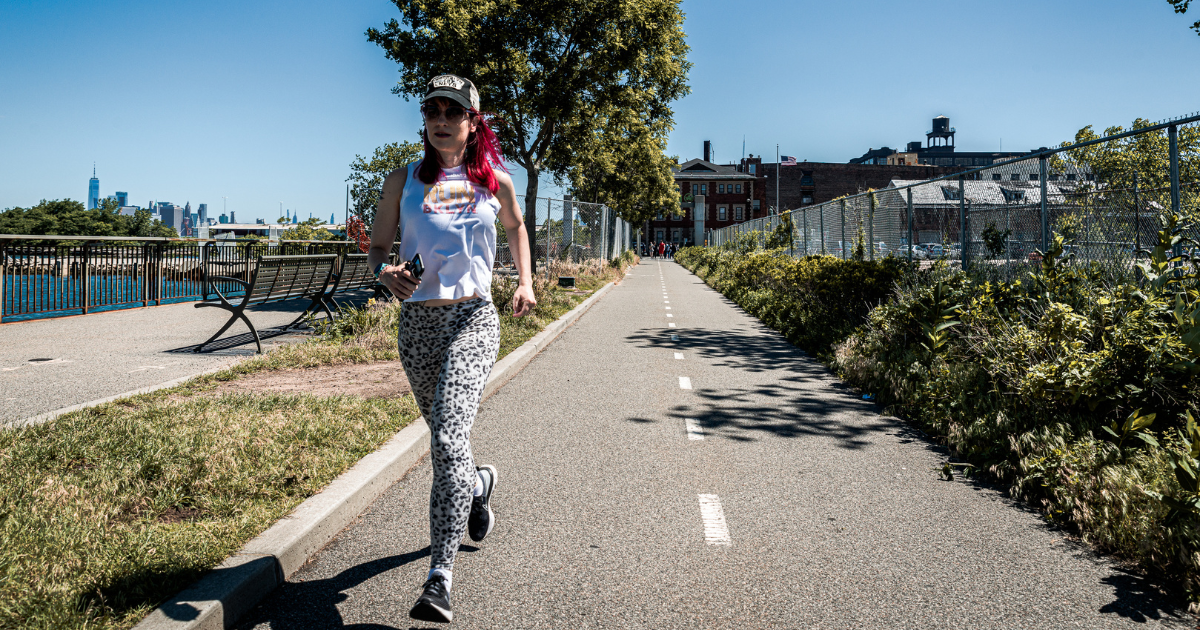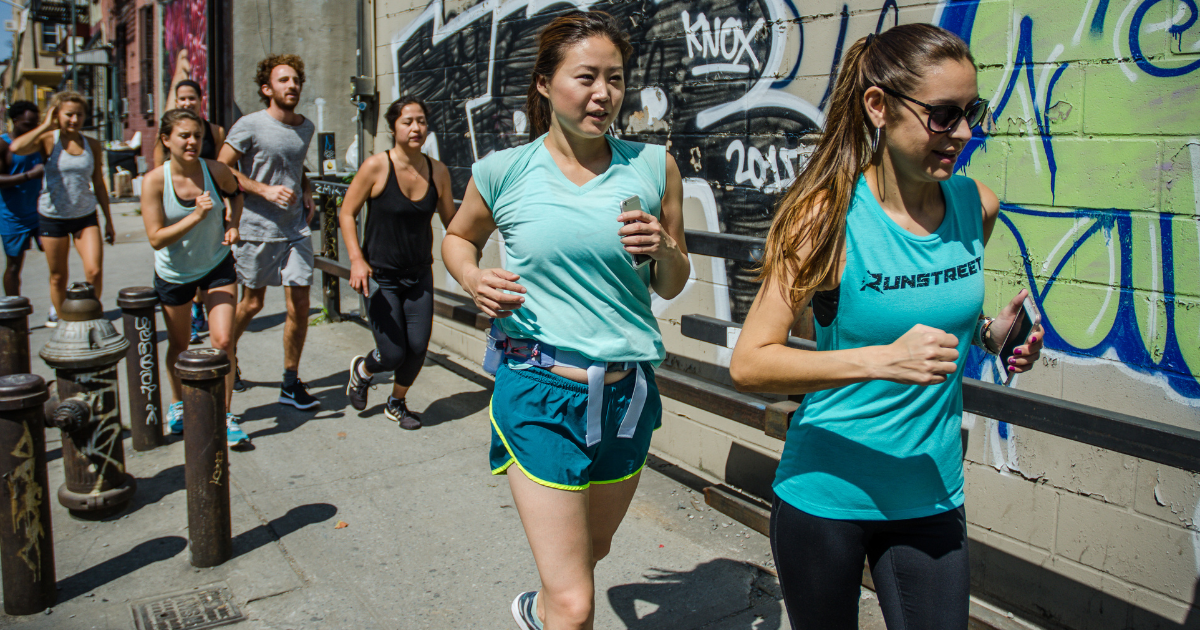What to Wear Running: Checklist from a Run Coach
Photos by Marques Jackson Photography.
By Marnie Kunz, NASM-certified trainer, USATF- RRCA-certified run coach
If you’re unsure what to wear running, these tips will help you find the best gear to stay comfortable. As a running coach and lifelong runner, I’m happy to see how far running clothes have come in my lifetime - from baggy sweats and heavy track pants in the ’90s to lightweight, moisture-wicking fabrics today. In fact, there are so many options for running clothes and athletic gear that it can be hard to figure out what you need and what’s unnecessary. This checklist will help you dress for your runs and races and brave any weather Mother Nature throws your way.
Related Post: Best Running Belts Based on Wear Tests
Disclaimer: When you buy through our links, we may earn a commission - at no extra expense to you. We only do this for products we have tried or come highly recommended. Learn more.
What to Wear Running: A Guide
With this guide, you no longer have to agonize over what to wear running. Instead, by breaking it down into categories, we’ll go over everything you need to know while keeping things simple. The words to live by when it comes to running clothing are: moisture-wicking. Whether you’re picking out running socks or looking for a shirt, opt for moisture-wicking gear with synthetic fabric blends to help you stay dry and comfortable on the run. The other crucial part of dressing to run is layering. Layers will help you stay warm and dry while allowing you to peel off the top layer if you get too warm on the run.
Here’s a breakdown of what to wear running with all the basic items you need:
Running Shoes
Running shoes are your most important piece of equipment for training and racing. I recommend going to your local running store to get fitted for shoes. They can do a gait analysis and determine the best shoe options for your running style and preferences. Check out our article How to Find the Best Running Shoes for more tips on picking out shoes.
When it comes to running shoe brands, there is not a single brand that’s best for everyone. So I advise my coaching clients to focus more on the shoe style than the brand. Some stability shoes help correct pronation issues, for instance. In contrast, trail running shoes with treads help people who need more traction and do a lot of trail running.
Related Post: Hoka Mach 6 Shoe Review: Why I Love This Shoe
Budget-Friendly Tip: Keep in mind that if you’re on a budget, last season’s running shoe models can work great, as usually, the shoe companies only make minor structural changes from year to year. Often last season’s colors are on sale, and you can get great deals if you don’t mind the colors.
Running Socks
Running socks are right up there with shoes in keeping your feet comfortable and free of blisters. Choose moisture-wicking running socks that keep your feet dry on the run. Make sure you use the socks you’ll be running in when you try on shoes to ensure a fit that’s not too tight or loose.
If the weather changes seasonally where you live, you will need thicker, warmer running socks for cold weather (such as wool socks). For hot weather, opt for more lightweight, thin socks. Some runners like to get low-ankle socks for hot weather running and long socks for the cold.
I have some Merino wool running socks for cold wintery days in NYC and more lightweight ankle socks for hot summer days.
Related: Spring Running Gear Refresh - The Essentials
Running Shirts
For running shirts, choose moisture-wicking athletic tops that fit according to your personal preference. Some runners like fitted shirts, while others prefer looser tops, so wear the styles that make you comfortable. The key is to get lightweight moisture-wicking materials for warmer weather and more insulated materials like fleece or synthetic down for cold weather runs.
For cold weather running, base-layers are crucial. A long sleeve shirt made with synthetic material that wicks sweat is a great base layer. Then you can add a middle layer like long-sleeved tops and a running coat or jacket on top for frigid temperatures.
Avoid all-cotton shirts as they will hold moisture, and your sweat will end up bogging you down.
Budget-Friendly Tip: As with running shoes, your running clothes do not have to be a specific brand. As long as the shirts are comfortable, moisture-wicking, and suited to the weather, that’s all you need. You can snag deals by buying shirts from last season and shopping at discount stores or outlets.
Bottoms
Running pants and shorts also should be made of moisture-wicking material (noticing a common theme?). Choose running tights or capris that won’t make you uncomfortable and provide enough coverage so they’re not see-through.
When in doubt, I find that black running pants or shorts are a good option as they can go with any tops and won’t show dirt. However, if you’re running in the heat, opt for lighter-colored bottoms, which reflect the sun instead of absorbing more heat.
When it comes to running bottom brands, it comes down to personal preference. I have run in most of the major running brands and found good pants from each brand. If you can splurge on pants or don't mind the additional cost, some of the more expensive brands like Lululemon have quite a few popular and flattering styles.
Budget-Friendly Tip: Once you find a pair of running pants or shorts that you like, look for sales on them so you can stock up. Shop out of season and save on pants by buying them in summer and buy shorts in winter. Also, consider getting them in last season’s colors for more discounts.
Sports Bras
A sports bra is an important investment that can make or break your run. The best way to find the right sports bra is to go to the store and try them on. Then, jog in place in the dressing room to see how the sports bra feels when you’re moving. Remember that you want a snug fit but not too tight, as chafing can turn long runs into painful events. You should have enough room to fit two fingers between the sports bra strap and your shoulder.
For smaller-busted women, compression sports bras are popular. These go on like a crop top and have a simple design with no underwires or cups. For more support, you can go with an encapsulation sports bra with two cups like a regular bra and added coverage. Make sure any sports bra you choose has moisture-wicking material designed for runners. Sports bras for lower-impact activities like dance or cycling won’t have as much support as running sports bras.
Budget-Friendly Tip: Big-name sports bras tend to be more expensive, but many smaller brands have comfortable options. Shop the clearance rack for the best deals on sports bras, and remember that most people won’t see your sports bra, so a discounted bra with a color you don’t normally wear is a great way to save money.
Running Accessories
Here are some other running items you may need:
Running hat.
Sport sunglasses.
Sunscreen.
Gloves, winter hat, and running jacket for cold weather.
Your ID and a credit card in case of emergencies.
Running watch, fitness tracker, or running app on your phone.
A running backpack, water bottle, or fuel for long runs or run commutes.
A neck gaiter can be helpful to protect your neck from the cold.
Headband to keep sweaty hair off your face.
Rain jacket to prevent you from getting wet on rainy day runs.
Balaclava or ski mask for running on especially cold days.
Running Gear Checklist
This checklist will help you determine what to wear running, and you can adapt the list to the weather conditions in your area:
Running Shoes
Moisture-wicking socks
Moisture-wicking shirt
Sports Bra
Moisture-wicking pants or shorts
Hat
Sunglasses
Cold weather gear, if needed - running jacket, gloves, winter hat
Running watch or fitness tracking app
Sunscreen
ID and credit card
Optional: Water bottle, running backpack, and running fuel
Knowing what to wear running is paramount to enjoying your runs and progressing in your training. Whether you’re a beginning runner or a seasoned pro, evaluating your running gear each season and updating your checklist to ensure you stay protected in all weather conditions is important.
If you need a training plan for your next race or to crush your running goal, check out the Runstreet Training Center for personalized options.
Happy running to you! 😊
Related Posts: Best Running Underwear From Wear Tests, How to Find the Best Running Watch
Marnie Kunz is a NASM-certified personal trainer and USATF- and RRCA-certified running coach based in Brooklyn, NY. Marnie likes helping people get and stay active to enjoy a better quality of life. When she’s not doing fitness things, Marnie enjoys exploring with her dog, a mischievous rescue Akita.





